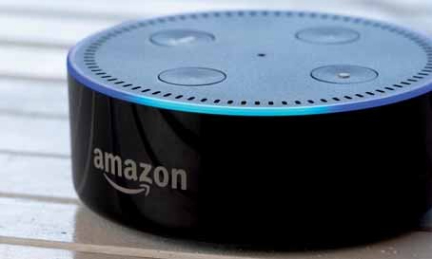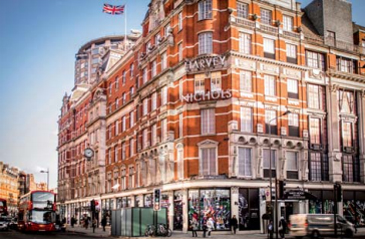The retail world is moving at a supersonic pace. It’s not technology driving that speed, it’s the consumer. Today’s high-velocity consumer is challenging current retail models; evermore demanding, with new values that are taxing even the most consumer-centric businesses. This is a consumer who is time-poor and looking to save time through mobile- led, frictionless retail strategies, but at the same time, seeking a more human connection.
 In a world of fake news, consumers are increasingly confused about the correct actions to take around complex messages, such as sustainability, and unsure of who to trust to deliver unbiased information. Meanwhile, the rise of the sharing and experience economies, combined with a more financially uncertain younger consumer, is also affecting the types of products and experiences retailers need to focus on.
In a world of fake news, consumers are increasingly confused about the correct actions to take around complex messages, such as sustainability, and unsure of who to trust to deliver unbiased information. Meanwhile, the rise of the sharing and experience economies, combined with a more financially uncertain younger consumer, is also affecting the types of products and experiences retailers need to focus on.
Using WGSN’s research methodology, we analysed the macro shifts taking place across society, technology, industry, environment, politics and creativity. We then identified the six key shifts in consumer behaviour that are taking place and the key strategies you will need to implement to stay relevant into 2020 and beyond.

The Handheld Retail Revolution
In many markets, people now spend more time in front of screens than sleeping or in face-to-face conversations. Some 26 percent of American adults admit they are online ‘almost constantly’, in a 2018 Pew Research study, up from 21 percent in 2015. This is significantly more pronounced among younger cohorts, with 39 percent of those aged 18- 29 and 36 percent of aged 30-49 saying they are constantly online. It’s no surprise then that people increasingly feel more comfortable when their relationships with businesses and services are meditated via a screen.
 This mobile mindset, combined with evolving shopper journeys that see more online research being done before visiting physical retail to transact, means that a purchasing decision is more likely to have been made before the customer enters the store. This requires self- service strategies that put the customer in control of the moment of transaction, while also giving them access to a human should the need arise.
This mobile mindset, combined with evolving shopper journeys that see more online research being done before visiting physical retail to transact, means that a purchasing decision is more likely to have been made before the customer enters the store. This requires self- service strategies that put the customer in control of the moment of transaction, while also giving them access to a human should the need arise.
Frictionless or low-friction checkouts are becoming increasingly commonplace and will in coming years be a hygiene factor for retailers. The attention paid to the launch of Amazon Go and the roll-out of Alibaba’s Hema supermarkets confirms that consumer expectations are rising, and those that continue to win will extend on these strategies further to put the consumer even more firmly in the driving seat.
YouGov research sponsored by Cancer Research UK found that 44 percent of 18- to 24-year-olds said they felt more comfortable speaking to new people through social media, messaging apps and other online means than in person.
Only 37 percent said they felt more comfortable speaking to people they didn’t know face-to-face, compared to more than two-thirds of those aged 55 and over.
64 percent of retailers say mobile checkout is a priority for their business.
Extend In-Store Mobile Functionality
 Sam’s Club has added Scan & Go self-checkout to its stores after a successful local trial. As well as improving payment times, it has also included a voice-based wayfinding tool to help locate items in the club using beacon technology and members’ smart shopping lists to map the most efficient route through the club. It’s also building out augmented reality strategies to help customers navigate the purchasing process, showcase how to use products and highlight features, including how items are sourced. Tapping into the ability to use augmented reality to delight the customer, it has also said that it will look at ways to digitally turn consumers’ trolleys into pirate ships.
Sam’s Club has added Scan & Go self-checkout to its stores after a successful local trial. As well as improving payment times, it has also included a voice-based wayfinding tool to help locate items in the club using beacon technology and members’ smart shopping lists to map the most efficient route through the club. It’s also building out augmented reality strategies to help customers navigate the purchasing process, showcase how to use products and highlight features, including how items are sourced. Tapping into the ability to use augmented reality to delight the customer, it has also said that it will look at ways to digitally turn consumers’ trolleys into pirate ships.
Create More Natural Interactions on Mobile
 Use AI to help create more “human” interactions on mobile. Consumer expectations are rising as virtual assistants like Amazon’s Alexa and Google Assistant become more common. Natural language strategies are set to become a consumer expectation rather than a novelty. Strategies that help consumers to find items using visual search will help emerging consumers who see their world as a shopfront and site of discovery.
Use AI to help create more “human” interactions on mobile. Consumer expectations are rising as virtual assistants like Amazon’s Alexa and Google Assistant become more common. Natural language strategies are set to become a consumer expectation rather than a novelty. Strategies that help consumers to find items using visual search will help emerging consumers who see their world as a shopfront and site of discovery.
EasyJet has launched an app feature that enables consumers to book holidays with Instagram images. Its Look & Book search function suggests destinations using a combination of image recognition and geotagging to guess the location of uploaded pictures.
Get in Front of the Transition
As self-checkout and self-service strategies become the norm, 7.5 million retail jobs are at ‘high risk of computerisation’ in the US, with the 3.5 million cashiers the industry employs likely to be hard hit. Analysis by McKinsey suggests that next-generation automated grocery stores could see the number of labour hours for inventory and stocking reduced by nearly two-thirds.
As one of the largest employers in many developed economies, the retail industry needs to manage this shift carefully. Retailers need to ensure that as jobs are lost, staff are retrained for new roles where possible to minimise brand backlash, while maximising long-term profitability. Retailers need to remember that workers are consumers, and a reduction in the number of those employed will eventually mean a reduction in the addressable market.
As the path to purchase shifts from the store as the place where people decide what they are going to buy, the role of the sales associate will have to evolve.
[CASE STUDIES]
Hero x Harvey Nichols
 Tech start-up Hero has partnered with Harvey Nichols on Messenger-style functionality that allows associates on the floor to answer queries from online shoppers via video. Shoppers can then opt into the retailer’s Black Book service, where associates can build a deeper relationship with consumers via messaging, sending them customised selections of the latest drops.
Tech start-up Hero has partnered with Harvey Nichols on Messenger-style functionality that allows associates on the floor to answer queries from online shoppers via video. Shoppers can then opt into the retailer’s Black Book service, where associates can build a deeper relationship with consumers via messaging, sending them customised selections of the latest drops.
Macy’s Style Crew
 US department store Macy’s is recruiting its own store employees to become brand ambassadors. Ambassadors share videos that have been produced in partnership with Macy’ss and the branded video platform Tongal. These videos are designed to showcase employees’ personal interests, featuring related products carried by Macy’s to drive conversions. Participants earn a fee for each successful transaction in a similar way that stylists receive a commission on sales at bricks-and-mortar stores.
US department store Macy’s is recruiting its own store employees to become brand ambassadors. Ambassadors share videos that have been produced in partnership with Macy’ss and the branded video platform Tongal. These videos are designed to showcase employees’ personal interests, featuring related products carried by Macy’s to drive conversions. Participants earn a fee for each successful transaction in a similar way that stylists receive a commission on sales at bricks-and-mortar stores.
Reconsider the Role of the Associate
As the path to purchase shifts away from the store as the place where people decide what they are going to buy, the role of the sales associate will have to evolve. Retailers need to find solutions that attempt to create the advisory and service experience outside of the store. They will need to hire different kinds of people to thrive in this new world – associates that are as engaging and helpful on text and social media as they are in real life.
Where Next? Start To Consider Unattended Delivery
 Unattended delivery is emerging as a channel that could potentially mean that consumers never interact with a brand’s representatives. At this stage, consumers are still very wary of having delivery drivers access their homes. In the US, 68 percent of survey respondents in a Morning Consult study said they were not comfortable letting delivery drivers have access to their homes, with 53 percent reporting that the idea makes them ‘very uncomfortable’.
Unattended delivery is emerging as a channel that could potentially mean that consumers never interact with a brand’s representatives. At this stage, consumers are still very wary of having delivery drivers access their homes. In the US, 68 percent of survey respondents in a Morning Consult study said they were not comfortable letting delivery drivers have access to their homes, with 53 percent reporting that the idea makes them ‘very uncomfortable’.
 Innovative retailers in this space consider this a long-term play, gradually building up the necessary trust that will be required to allow delivery people into people’s homes via trials. They will also need to lay groundwork that will encourage customers to buy into smart locks as a secure and convenient necessity, using them to allow other services access to their homes, such as childminders, dog walkers or cleaning and laundry professionals.
Innovative retailers in this space consider this a long-term play, gradually building up the necessary trust that will be required to allow delivery people into people’s homes via trials. They will also need to lay groundwork that will encourage customers to buy into smart locks as a secure and convenient necessity, using them to allow other services access to their homes, such as childminders, dog walkers or cleaning and laundry professionals.
Amazon and Walmart are already undertaking trials in the US, while Waitrose has begun recruiting customers for a trial in South London. As friction continues to be minimised through these kinds of services, retailers will need to find other ways to remain top-of-mind and memorable to the customer.





